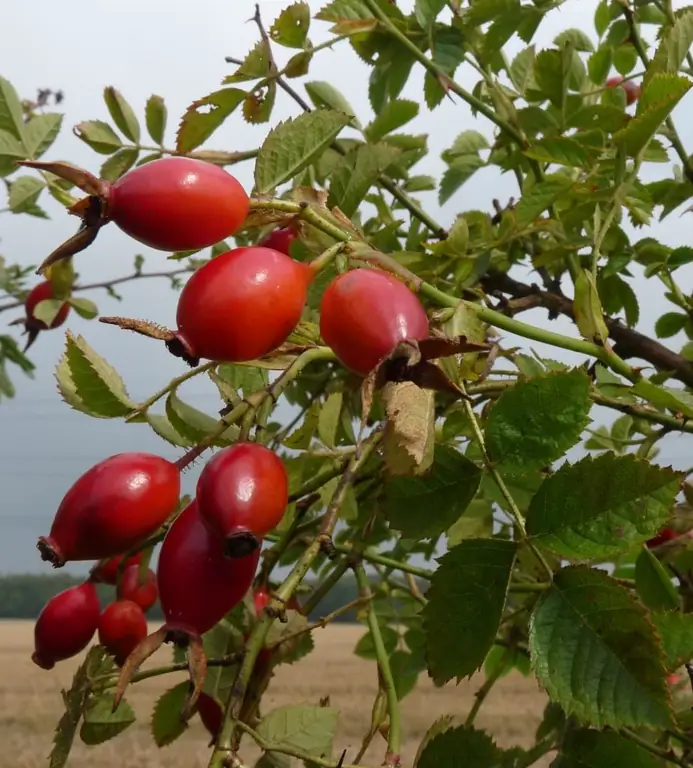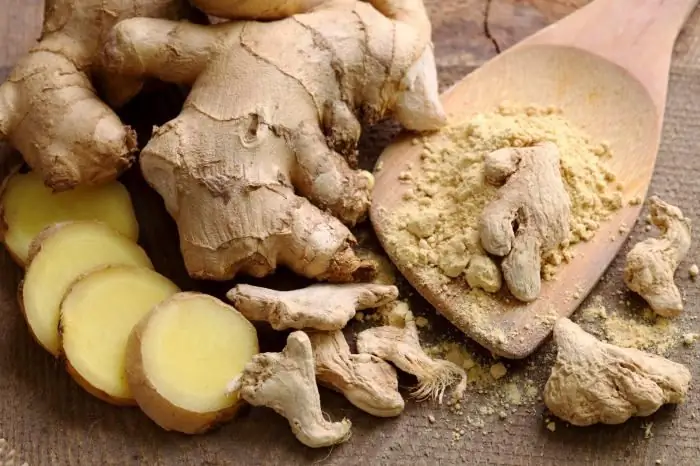2026 Author: Isabella Gilson | [email protected]. Last modified: 2025-01-23 12:50:41
Only in the 16th century did people start growing currants near their homes. And before that, it grew only along the banks of rivers and streams, in flood meadows and near swamps - that is, in places with the highest humidity. And today in such natural corners you can see wild currants, but with smaller fruits than cultivated garden varieties.
General information
The height of garden fruit currant bushes is 1.5 meters or more. Wild currant - its undersized predecessor, has a growth several times smaller.

This plant can bear fruit for up to 20 years. However, its yield decreases significantly after 10 years, the branches dry up, new basal shoots appear, and the fruits become smaller.
Currant got its name due to the peculiar aroma that spreads tens of meters from the bush during the flowering period. In the Old Slavonic language, its name sounds like "currant", translated as "strong smell".
Wild plants in science
All wild plants representan excellent source for introduction to the culture in an improved form. In botanical and various breeding institutions, various types of plants, such as wild currant and gooseberry, have been collected and used for breeding.
Fellow garden plants are sources of resistance genes to various pests and diseases, so when breeding completely new varieties, they are a storehouse of active biological substances.
Wild currant: types and varieties, distribution
In the vast forests and on the banks of the rivers of Siberia, on the ridges of the Pamir and Tien Shan - wild blackcurrant grows everywhere. It differs from the European plant and represents a separate subspecies, which has a more sprawling bush shape and brown, almost black or brown berries. Residents of these areas enjoy making delicious wild currant jam.
America (North and South), Asia is the real kingdom of these plants.
There is a wild grouse in the Far East. Its berries have an oblong-rounded shape and a bluish-black color with a waxy coating. The locals have their own name - "Aldan grapes".

In swampy places from the Ob to the Sea of Okhotsk, the currant-mokhovka grows. It is a squat shrub with creeping branches. It has large and tender berries that quickly fall off when fully ripe.
The most common type of wild currant is repis, brought to Europe in the early 18th century from North America.
Use
Very richvarious useful properties are fresh berries, from which jams, jellies, juices, compotes, fruit drinks, etc. are prepared. You can simply close the berries in sterilized jars, sprinkle with aspirin on top or pour boiled lemon juice. You can also dry the leaves and fruits of this magnificent miraculous plant. And many people make wild currant jam.

The huge benefit of these berries is confirmed by the fact that to meet the body's need for ascorbic acid, it is enough to eat 20-30 berries every day. For year-round use, the fruits can be frozen in order to use them thawed in winter or drink compote made from them.
Wild currant, as well as cultivated, is of great value when freshly picked. Unfortunately, the berries don't handle shipping well, but there are ways to preserve their great properties. The best is grinding fresh berries with a lot of sugar. This contributes to the preservation of their properties until the next season.
This amazing he althy berry is known to improve appetite. No wonder the German proverb says: "I ate a currant, set my teeth on edge." Here it is - wild currant.
Jam
Let's imagine one of the recipes for wild currant (repisa) jam, which practically does not differ from garden fruit jam recipes.
Four kilograms of peeled currants are thoroughly washed and dried, poured into a large saucepan. 4 kg of granulated sugar is added to it and all thisboiled over low heat with occasional stirring until the latter is completely dissolved.
After the start of boiling, cook for about 50 minutes (you can leave the foam on). And after complete cooling, pour the jam into jars washed with boiling water.

In conclusion, a little about the beneficial properties of currants
The described plant, especially wild blackcurrant, contains many vitamins, and therefore has excellent medicinal properties.
- The fruits have an excellent tonic, blood-purifying, vasodilating and diuretic effect.
- The rutin found in currants (vitamin P) strengthens blood vessels.
- Pigment that gives fruit color (carotene, from which vitamin A is formed), improves cell metabolism.
- Niacin (B3) helps to strengthen the nervous system, and vitamin B5 gives a beautiful shine to the hair.
- Iron and calcium are well involved in blood formation.
- Manganese and magnesium are good for the heart.
It should be noted that such properties are inherent not only in currant fruits, but also in its leaves.
Recommended:
How many times can you brew wild rose: useful properties, the procedure for preparing a decoction

Rosehip decoction is a charge of vivacity and strength, strengthening immunity and fighting colds. The article provides the rules for preparing a drink from the fruits, roots and leaves of the plant. General recommendations and advice are given. Special attention in the description is given to the benefits, therapeutic indications for use, as well as contraindications to the use of decoction
Wild goose: description, photo. Recipes for cooking wild goose in the oven

A wild goose, baked or stewed, but always fragrant and with spices, is rightfully considered a decoration of a good family table
How is feijoa useful and for what diseases? Feijoa fruit: useful properties, contraindications, photos and recipes. Feijoa jam: useful properties

When berries similar to gooseberries appeared on store shelves a few years ago, people hesitated to buy them for a long time. But, having figured it out and tried it once, they began to consider them an ordinary fruit, the name of which is feijoa. Over time, it became known that feijoa is useful
Ginger: useful properties and contraindications for women. Pickled ginger: useful properties

Each country has its own tradition of using ginger. So, the horned root in Asia, considered the birthplace of the plant, is a universal remedy for many diseases. In China and India, eating ginger is believed to promote a long and he althy life
Dates: useful properties and contraindications. Useful properties of dried dates

Dates are not only an oriental sweetness, but also a storehouse of vitamins. They are rich in nutrients and are also a natural cure for many ailments

